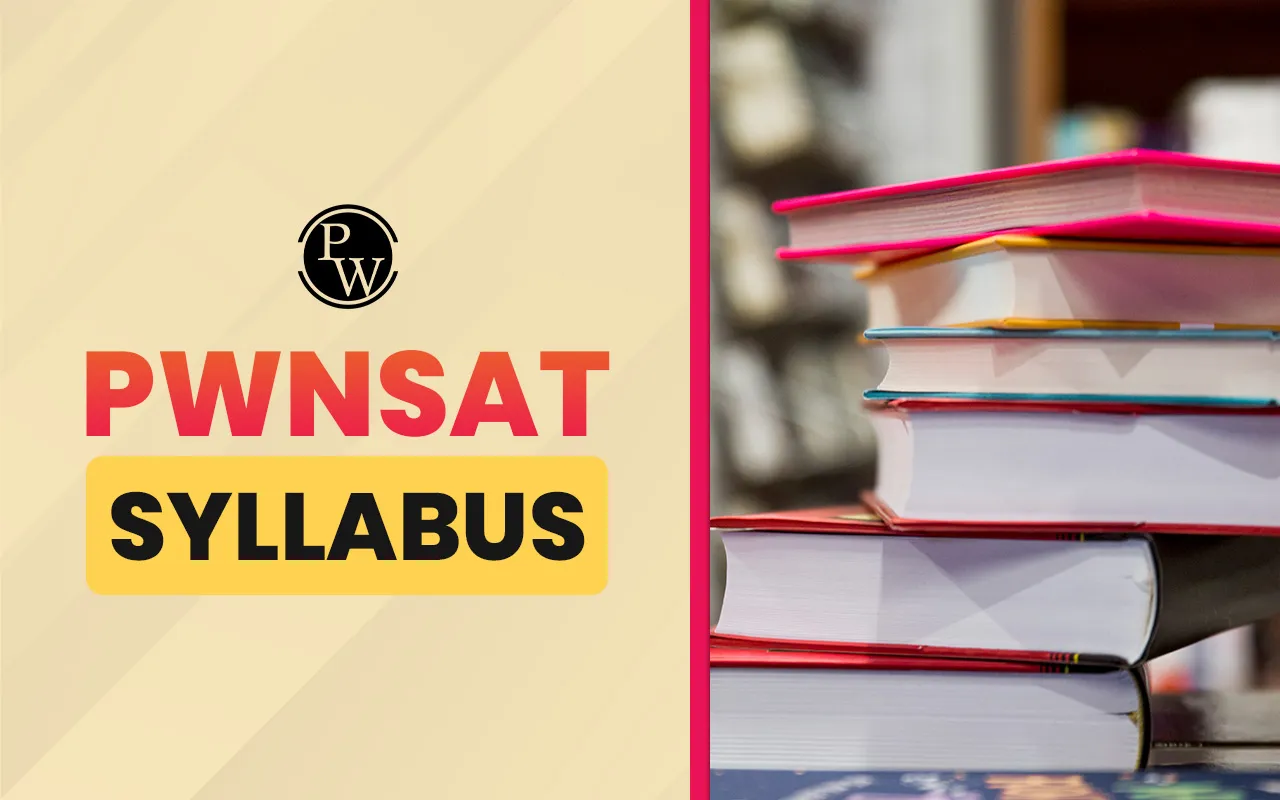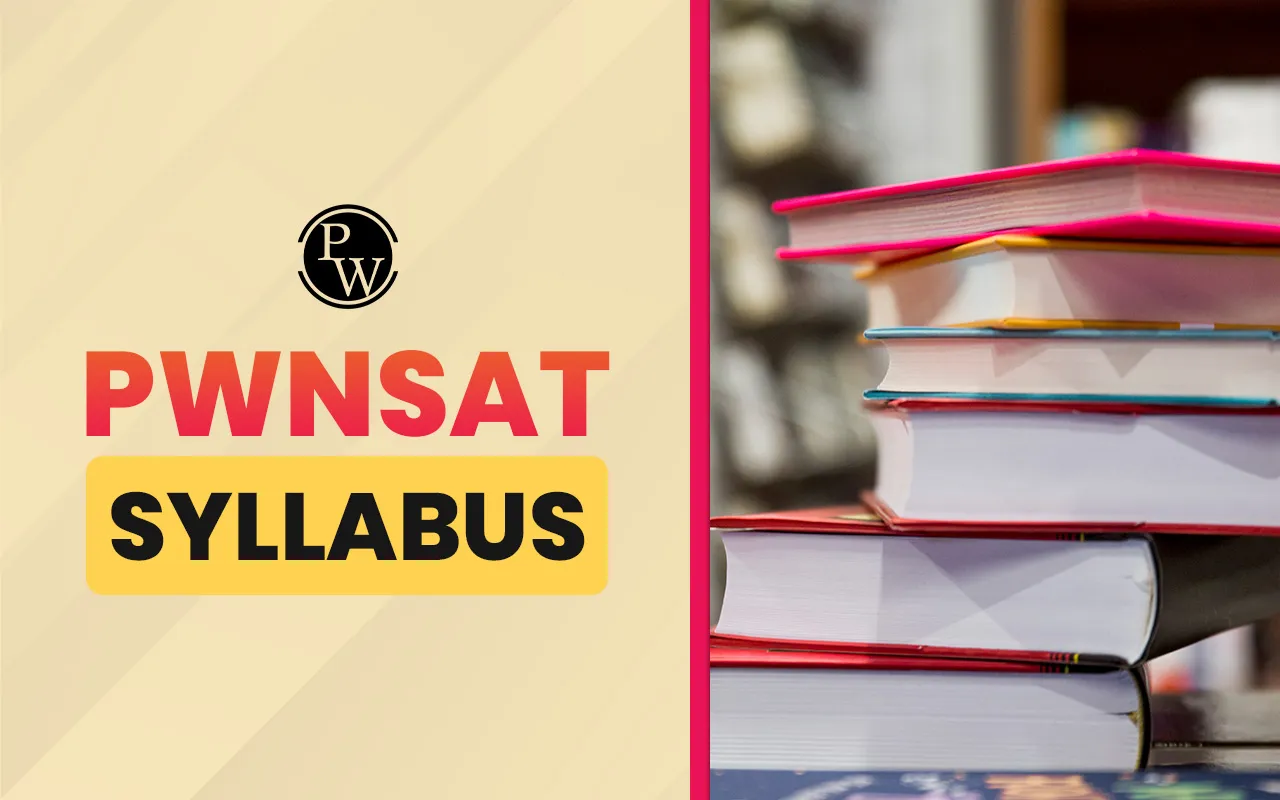

NSAT Syllabus: The syllabus for students in classes 5 to 9 encompasses core subjects such as Mathematics, Physics, Chemistry, Biology, and Mental Ability. In class 10, students are guided by distinct curricula tailored for JEE (covering Physics, Chemistry, Mathematics, and Mental Ability) and NEET (including Physics, Chemistry, Biology, and Mental Ability).
For classes 11 and 12, JEE aspirants focus on Physics, Chemistry, and Mathematics, while NEET aspirants study Physics, Chemistry, Botany, and Zoology, emphasizing specific NCERT chapters. This structured syllabus aims to evaluate foundational knowledge and readiness for competitive exams, supporting students in their preparation for scholarship assessments.
NSAT 2025 Phase 2 Overview
NSAT 2025 (Physics Wallah National Scholarship cum Admission Test) is a scholarship exam for students from classes 5 to 12 and droppers aspiring for JEE and NEET. It offers up to 100% scholarships, free registration, and both online and offline exam modes. NSAT provides access to faculty, quality study materials, and personalized counseling, making competitive exam preparation accessible nationwide.
The exam aligns with the NCERT syllabus and aims to empower economically weaker students with quality education and scholarship opportunities. Registration deadlines vary by exam mode, ensuring flexible participation for all aspirants.
| NSAT Overview | |
| Exam Name | NSAT 2025 (Physics Wallah National Scholarship cum Admission Test) |
| Conducting Body | Physics Wallah |
| Eligibility | Classes 5–12 students & 12th passouts, droppers (JEE/NEET aspirants) |
| Exam Mode | Online & Offline |
| Scholarship Amount | Up to 100% on PW courses |
| Question Type | Multiple Choice Questions (MCQs) |
| Exam Duration | 60 minutes |
| Registration Fee | None |
| Benefits | Scholarships, access to study materials, experienced faculty, and Vidyapeeth center support |
NSAT 2025 Syllabus Overview
The NSAT syllabus is meticulously structured to assess students’ understanding across core subjects based on their current class and career aspirations (medical or engineering). For classes 5 to 10, the syllabus covers Physics, Chemistry, Biology, Mathematics, and Mental Ability, with topics aligned to the NCERT curriculum for each grade.
For classes 11 and 12, the syllabus is split between medical and engineering tracks, focusing on relevant subjects: Physics, Chemistry, Botany, and Zoology for medical aspirants, and Physics, Chemistry, and Mathematics for engineering aspirants. This comprehensive approach ensures students are evaluated on foundational concepts as well as competitive exam readiness.
Here is a table of subjects and their corresponding classes, including both engineering and medical topics, designed for the convenience of students preparing for the NSAT. This information is based on trends from previous years, as the official syllabus for NSAT 2025 has not yet been released.
Class 5–10 Syllabus for NSAT
Here is the NSAT Syllabus for class 5-10.
|
NSAT Class 5–10 Syllabus |
|||||
|
Subject |
Class 6th |
Class 7th |
Class 8th |
Class 9th |
Class 10th |
|
Physics |
Sorting Materials, Separation of Substances |
Heat, Motion and Time, Electric Current, Effects of Electric Current |
Force & Pressure, Friction, Sound, Chemical Effects of Electric Current |
Motion, Force & Laws of Motion, Gravitation |
Light, Reflection & Refraction, Human Eye & Colourful World |
|
Chemistry |
Fibre to Fabric, Changes Around Us |
Acids, Bases & Salts, Physical and Chemical Change |
Combustion & Flame, Coal and Petroleum |
Matter in Our Surroundings, Is Matter Around Us Pure, Atoms and Molecules |
Chemical Reactions & Equations, Acids, Bases & Salts, Metals & Non-Metals |
|
Biology |
Components of Food, Getting to Know Plants |
Nutrition in Plants, Nutrition in Animals, Respiration in Organisms, Transportation in Animals & Plants |
Crop Production & Management, Microorganisms, Conservation of Plants & Animals |
The Fundamental Unit of Life, Tissues |
Life Processes, Control and Coordination |
|
Mathematics |
Knowing Our Numbers, Whole Numbers, Playing with Numbers, Basic Geometrical Ideas, Understanding Elementary Shapes |
Integers, Fractions and Decimals, Data Handling, Simple Equations, Line and Angles, Comparing Quantities, Properties of Triangles |
Rational Numbers, Linear Equation in One Variable, Data Handling, Square and Cube Roots, Comparing Quantities |
Number Systems, Polynomials, Coordinate Geometry, Lines and Angles, Triangles, Linear Equations in Two Variables |
Real Numbers, Polynomials, Pair of Linear Equations in Two Variables, Quadratic Equations, Arithmetic Progressions, Triangles |
|
Mental Ability |
Series, Direction Test, Mathematical Operations, Missing Character, Puzzles, Mirror & Water Image |
Series, Direction Test, Mathematical Operations, Missing Character, Puzzles, Mirror & Water Image |
Verbal & Non-Verbal Reasoning, Coding-Decoding, Direction Test, Figure Matrix, Problems Based on Figures |
Verbal Non-Verbal Reasoning, Series, Coding-Decoding, Direction Test, Figure Matrix, Problems Based on Figures |
— |
Class 11–12 Syllabus for NSAT
Here is the NSAT Syllabus tables for class 11-12 medical and emgineering students.
|
Class 11–12 Syllabus Overview (Medical) |
||
| Subject | Class 11th Topics | Class 12th Topics |
| Physics | Units & Measurements, Motion in a Straight Line, Motion in a Plane, Laws of Motion, Work, Energy & Power | Electric Charges & Fields, Electrostatics, Current Electricity, Moving Charges & Magnetism, Electromagnetic Induction |
| Chemistry | Some Basic Concepts, Structure of Atom, Classification of Elements, Chemical Bonding & Structure | Solutions, Electrochemistry, Chemical Kinetics, Haloalkanes & Haloarenes |
| Botany | Cell: The Unit of Life, Cell Cycle & Division, The Living World, Biological Classification | Sexual Reproduction in Flowering Plants, Principles of Inheritance, Molecular Basis of Inheritance |
| Zoology | Biomolecules, Body Fluids & Circulation, Excretory Products & Elimination | Human Reproduction, Health and Disease, Human Health and Diseases |
| Class 11–12 Syllabus Overview ( Engineering) | ||
| Subject | Class 11th Topics | Class 12th Topics |
| Physics | Physical World, Units & Measurements, Motion in a Straight Line, Motion in a Plane, Laws of Motion, Work, Energy & Power | Electric Charges & Field, Electrostatics, Current Electricity |
| Chemistry | Some Basic Concepts, Structure of Atom, Classification of Elements, Chemical Bonding & Structure | Solutions, Electrochemistry, Chemical Kinetics, The d- & f-Block Elements |
| Mathematics | Sets, Trigonometric Functions, Complex Numbers, Linear Inequalities, Permutations & Combinations | Inverse Trigonometric Functions, Matrices, Determinants, Continuity & Differentiability, Application of Derivatives |
Tips for preparing NSAT 2025 Phase 2
To prepare effectively for NSAT, start by thoroughly reviewing the detailed syllabus for your class and stream, focusing on NCERT textbooks for strong conceptual clarity. Create a study plan that allocates time for all subjects: Physics, Chemistry, Biology, Mathematics, and Mental Ability—and stick to it consistently.
Practice with sample papers and previous years’ questions to understand the exam pattern and improve sped and accuracy. Take regular mock tests to identify weak areas and revise them.
Use clear notes and structured study materials, preferably from coaching centers like PW Vidyapeeth centres, to reinforce learning. Stay disciplined, maintain a positive mindset, and avoid last-minute cramming.
| Also Check |
| NSAT EXAM DATE 2025 |
| NSAT SCHOLARSHIP 2025 |
| NSAT ELIGIBILITY 2025 |
| NSAT REGISTRATION 2025 |
